Project Goals for a successful Business Intelligence Software Implementation
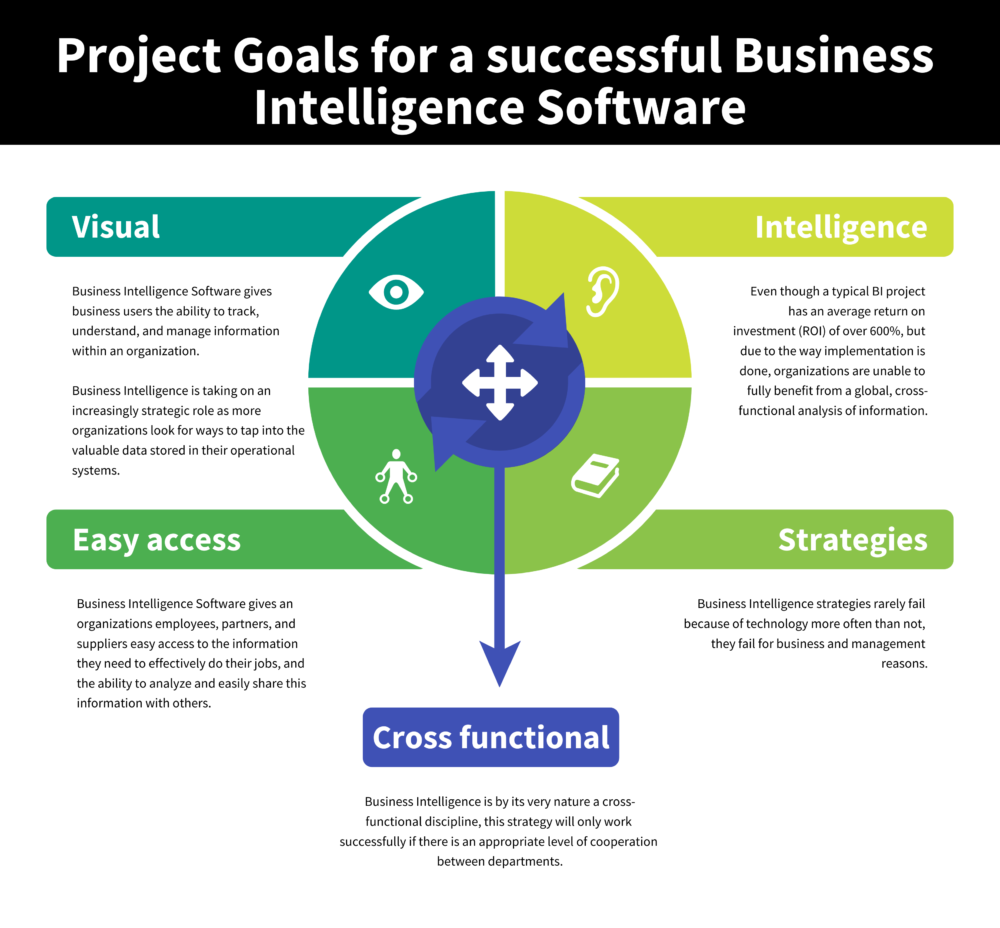
Business Intelligence Software gives business users the ability to track, understand, and manage information within an organization. Business Intelligence is taking on an increasingly strategic role as more organizations look for ways to tap into the valuable data stored in their operational systems. Even though a typical BI project has an average return on investment (ROI) of over 600%, but due to the way implementation is done, organizations are unable to fully benefit from a global, cross-functional analysis of information.
Business Intelligence Software gives an organizations employees, partners, and suppliers easy access to the information they need to effectively do their jobs, and the ability to analyze and easily share this information with others.
What are the Project Goals for a Business Intelligence Software Implementation?
Project goals for a Business Intelligence (BI) software implementation typically include improving data-driven decision-making, increasing efficiency and productivity, reducing costs, and gaining a competitive advantage. Organizations may also aim to streamline processes, increase visibility into key performance indicators (KPIs), and enhance collaboration among team members. The specific goals for a BI software implementation will vary depending on the needs and objectives of the organization, but the overarching goal is to use data to drive business success. By clearly defining project goals, organizations can ensure that their BI software implementation is aligned with their overall business strategy and delivers tangible benefits.
- Data Integrity
- Everyone using the same integrated information
- Common and shared master data and hierarchies
- Integration and consolidation of various sources of data
- Framework for cross-module reporting from ERP system
- Maintain full granularity of high-volume, granular and non-granular transactions
- Data Analysis
- Transition from static to flexible online reports
- Automation of complex calculations
- Common definitions for complex calculations
- Preconfigured formatting in Excel frontend (portal)
- Centralized query development
- De-centralized end-user reporting
- Role-based data marts
- Cost Reduction
- Consolidation of infrastructure
- Automated job scheduling
- Reduction of manual reconciliation processes
- Reduced need for customized programming
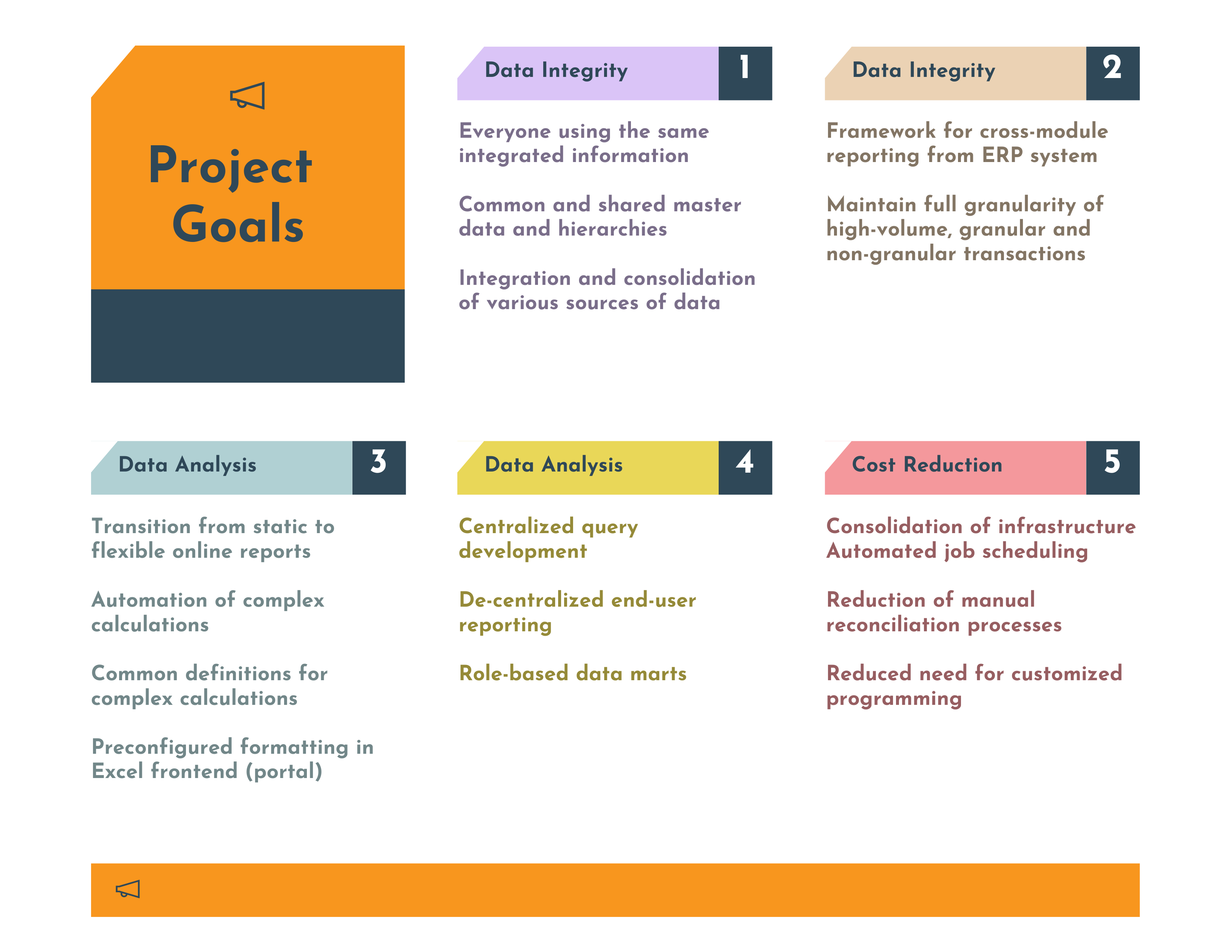
What are the Project Goals for a Business Intelligence Software Implementation
What are the Business intelligence strategies to use?
Business Intelligence strategies rarely fail because of technology more often than not, they fail for business and management reasons. Business Intelligence is by its very nature a cross-functional discipline, this strategy will only work successfully if there is an appropriate level of cooperation between departments.
Business Intelligence (BI) strategies can vary depending on the needs and goals of an organization. However, some common BI strategies include: data warehousing, data governance, data visualization, predictive analytics, and data mining. Another strategy is using Agile methodology to ensure quick and iterative delivery of BI solutions. A multi-channel approach that considers mobile, desktop, and cloud-based solutions can also be adopted. Additionally, organizations may consider investing in machine learning and artificial intelligence (AI) technologies to automate data analysis and enhance decision-making capabilities. By combining these strategies, organizations can create a comprehensive BI solution that meets their unique needs and drives business success.
What is a Top Down Data Modeling Strategy?
- Perform an inventory of all reports
- Function
- Characteristics
- Key figures/key performance indicators
- Granularity
- Source of data
- Accept Duplication
- Between ERP and Warehousing reporting
- Among Warehousing structures
- Advantages
- User-specific
- Disadvantages
- May be difficult to incorporate new requirements
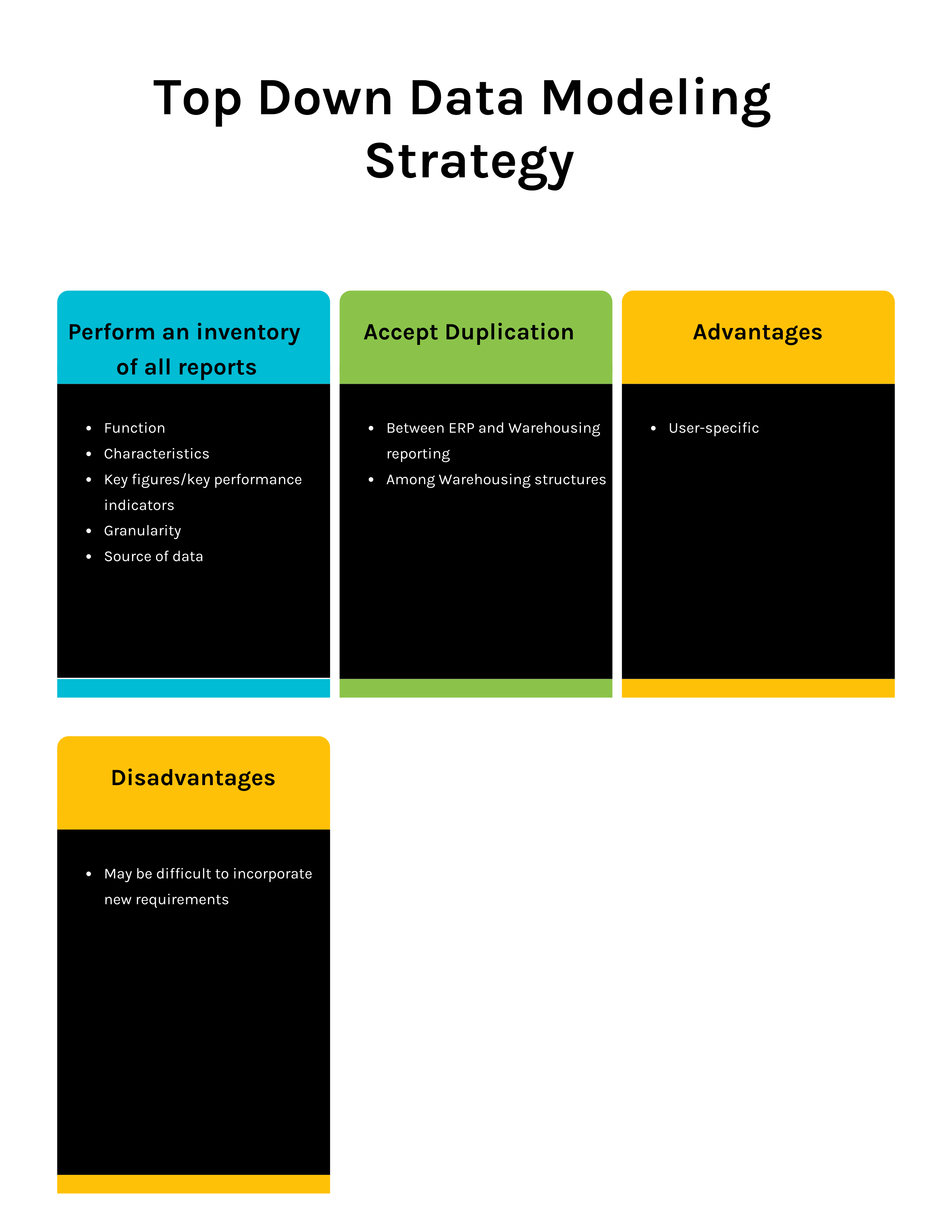
Top Down Data Modeling Strategy
What is a Bottom-Up Data Modeling Strategy?
- Extractor-based
- Typically utilizes Data Warehousing standard content
- Accept Duplication
- Between ERP and Data Warehousing reporting
- Among Data Warehousing structures
- Advantages
- Function-specific (e.g. Financial reporting)
- Easier to handle changing requirements
- Disadvantages
- Not user-specific
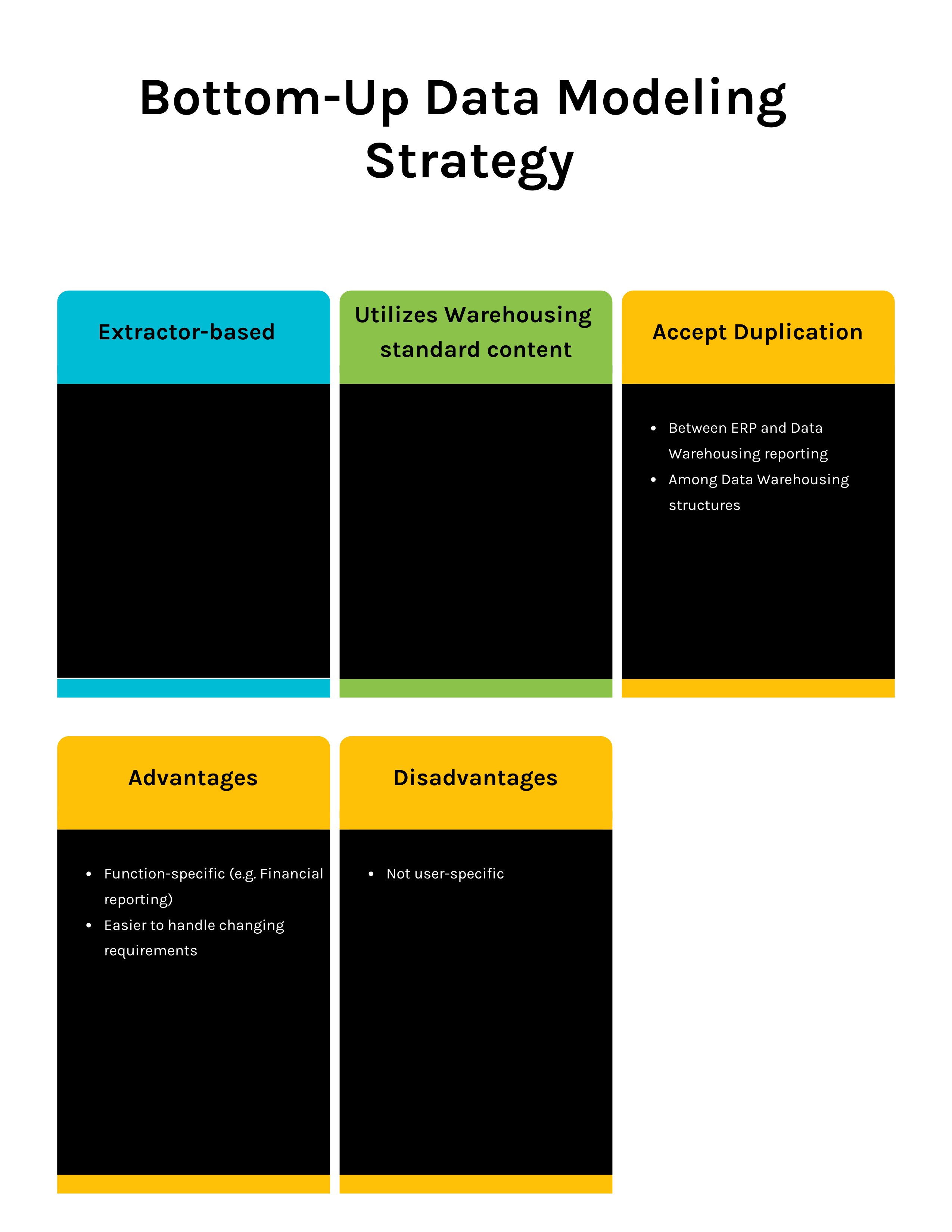
Bottom-Up Data Modeling Strategy
What is a Hybrid Approach Data Modeling Strategy?
- Most common approach
- Assess required reports
- Assess required fields
- Perform ‘Gap’ analysis to match Business Warehouse delivered standard content
Business Intelligence is present in some shape or form in all of today’s large organizations. In most cases, Business Intelligence implementations are ad hoc and take place at a departmental level and without any overall Business Intelligence strategy.
What is the Data Integration Strategy for a Business Intelligence?
The Data Integration Strategy for a Business Intelligence (BI) solution refers to the process of bringing together data from various sources into a centralized repository for analysis and reporting. The goal of a data integration strategy is to ensure that data is accurate, consistent, and up-to-date, and that it can be easily accessed and used by business users. This may involve extracting data from various sources, transforming it into a common format, and loading it into a data warehouse or data mart. A data integration strategy should also consider data quality, data governance, and security and privacy concerns. By developing a clear data integration strategy, organizations can ensure that their BI solution provides a complete and accurate view of their data, enabling them to make informed decisions and drive business success.
- Logically segment data by summary vs. granularity
- Ensure harmonization of characteristic values in order to enable the reporting of the merged data; many tools exist; e.g. Ascential, Master Data Management, and other tools
- Create distinct key figures by source to enable summary reporting of each respective source of data
- Use MultiProviders
What is the Query Development Strategy?
Query development strategy refers to the process of designing and constructing database queries to retrieve specific data from a data source. The goal of a query development strategy is to create efficient, effective, and reusable queries that can be used to support business intelligence and decision-making processes. A query development strategy should consider the data architecture, data sources, and user requirements, and ensure that the queries are optimized for performance and scalability. The strategy should also consider security and data privacy concerns, and ensure that sensitive data is protected. By developing a clear query development strategy, organizations can ensure that their BI solution is effective and provides the information and insights needed to drive business success.
- Query-based configuration is maintained centrally by the Data Warehousing Administrator
- Selection and order of ‘Characteristics’ and ‘Key Figures’
- Definition of ‘Restricted Key Figures’ (filtering key figure against one or more characteristics)
- Definition of ‘Calculated Key Figures’ (formulas)
- Definition of ‘Structures’
- Definition of user-defined characteristic ‘Variable’ selection
- Definition of user-defined ‘Time-Based Trending Variables’
- Definition of ‘Conditional Formatting’
- Formatting (e.g. subtotaling, decimal places, hierarchy levels, etc…)
- Drilldown to other Data Warehousing queries (Report-to-Report Interface)
What is Business Intelligence Data Access Strategy?
A Business Intelligence (BI) data access strategy is a plan for how an organization will collect, manage, and use data to drive business success. The goal of a BI data access strategy is to ensure that data is accurate, relevant, and accessible to those who need it. This may involve centralizing data in a data warehouse, establishing data governance policies, and investing in data management tools. A BI data access strategy should also consider security and privacy concerns, and ensure that data is protected against unauthorized access or manipulation. By developing a clear data access strategy, organizations can ensure that their BI solution is effective and meets the needs of the business.
- Efficient data access
- ‘Slicing and dicing’ data in an InfoCube should be relatively fast
- Use the ‘Report-to-Report’ (RRI) functionality in Data Warehousing to drill from summary InfoCubes to granular objects
- Avoid direct reporting against physical objects
- Utilize user-defined time-based variables to apply different time periods to different columns of a report
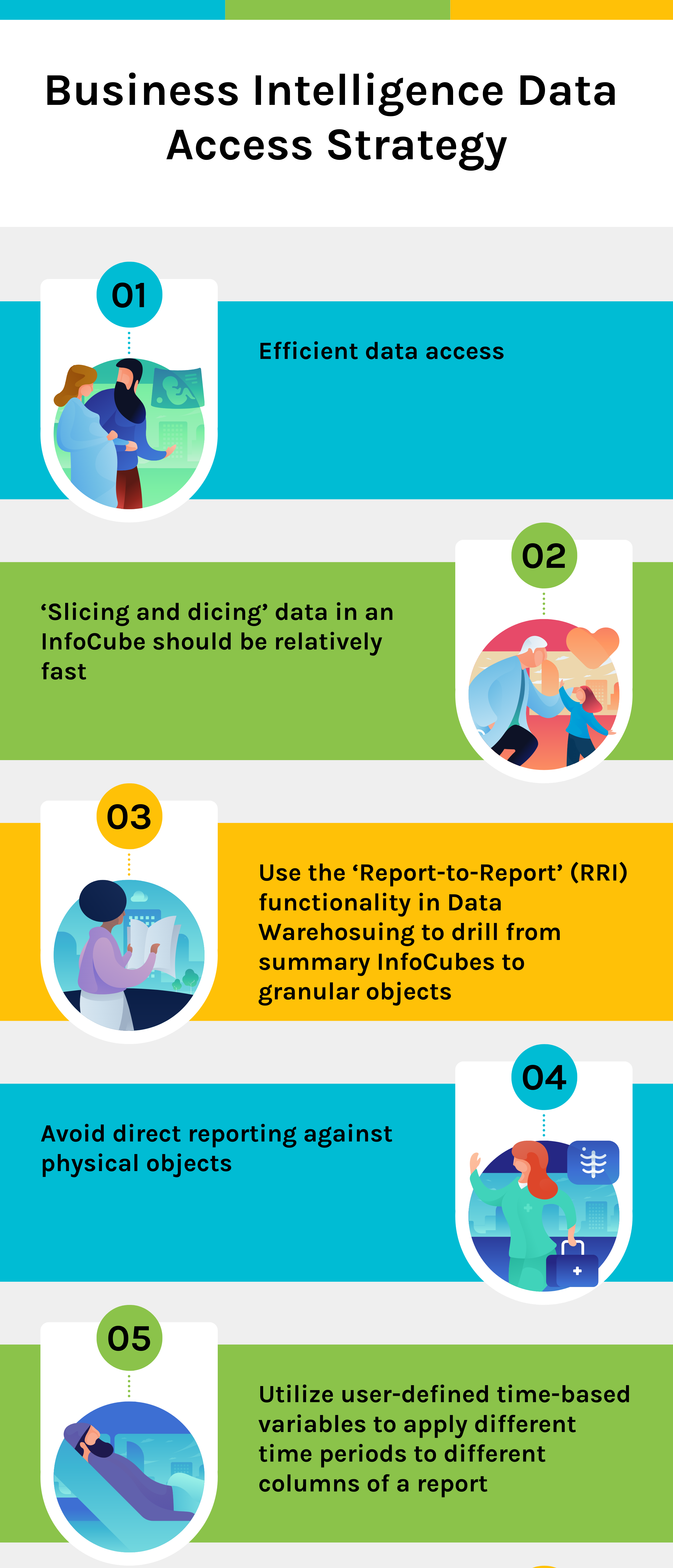
What is Business Intelligence Data Access Strategy
What are the Critical Success Factors of Business Intelligence Projects?
No Business Intelligence deployment is completely without problems. In some cases, the problems may even be an essential part of getting the right resources and increasing focus on some aspect of the Business Intelligence project (for example with the data quality issues discussed earlier). It is important that you effectively manage expectations.
Critical success factors for Business Intelligence (BI) projects include clear objectives, stakeholder engagement, technology selection, data preparation, training, and ongoing support. Effective project management, collaboration between IT and business teams, and a focus on user adoption are also important. Additionally, it's essential to have a flexible and scalable BI solution that can adapt to changing business needs and support growth. Regular performance monitoring and continuous improvement are also critical to ensuring that the BI project delivers the desired outcomes and provides ongoing value to the organization. By prioritizing these critical success factors, organizations can increase the chances of a successful BI project and realize the full benefits of their investment.
Implementation
- Utilize Data Warehousing providers delivered Business Content
- Prototype Business Warehouse content within 90 days
- Establish clear scope
- Implement Business Warehouse behind ERP; especially if ERP implementation is complex
- Implement Business Warehouse within the context of a stable ERP environment
- Minimize the usage of custom codes
- Adhere to data modeling guidelines, system transport and performance
- Strong technical team (data modeling and Basis)
- Strong ERP teams
Staffing
- Staff the appropriate mix of resources (experience)
- Staff the appropriate roles of resources
- Staff Business Warehouse team members that understand the business processes and their data
Organizational
- The organization has a long-term, strategic commitment to Executive support

What are the Critical Success Factors of Business Intelligence Projects

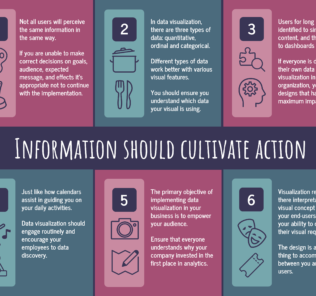
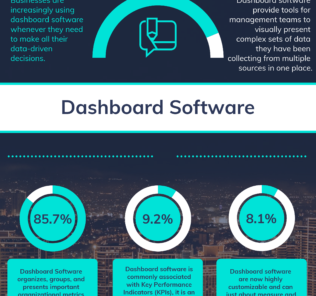
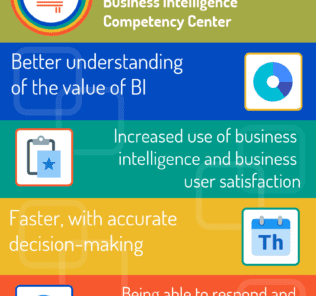
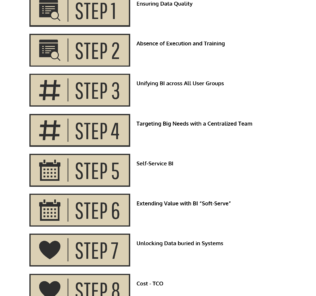
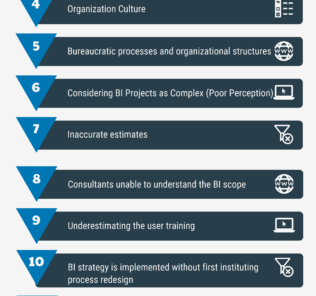
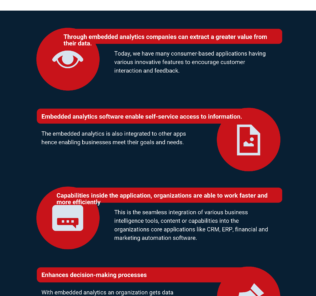




By clicking Sign In with Social Media, you agree to let PAT RESEARCH store, use and/or disclose your Social Media profile and email address in accordance with the PAT RESEARCH Privacy Policy and agree to the Terms of Use.